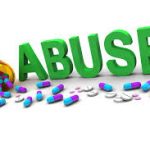Prescription Drug Abuse on the Rise
Prescription drugs are killing more people than illegal narcotics like heroin and it is just getting worse. According to statistics from the Alcohol and Drug Foundation (ADF), accidental deaths in Australia from pharmaceutical medications have doubled in the last decade. Valium on its own contributed to the most overdose deaths caused by prescription drugs with 979 deaths since 2009 and a whopping 176 deaths in 2015 alone.
The number of deaths caused by a prescription drug overdose is on the rise. According to ABC News Net a record 800 Australians are dying from a prescription drug overdose every year. In the past five years overdose deaths have increased by nearly 23 per cent.
In Victoria alone 420 people died from a prescription drug overdose in 2015. That’s a jump of 8.5 per cent and the largest year over year increase since 2010.
Vice President of the Australian Medical Association (AMA), Dr Tony Bartone says prescription drugs have caused more fatalities than road accidents.
That’s a lot of preventable deaths.
For over 20 years advocates like Melbourne GP Dr. Nick Carr and the Victorian Ambassador for Scriptwise have been calling for prescription monitoring. If you add up the deaths that have occurred due to a prescription drug overdose over the past 20 years, how many thousands of these were preventable deaths, asks Victorian Alcohol and Drug Association executive officer Sam Biondo
Tasmania had the highest rate of Oxycontin use per capita in all of Australia until it rolled out its prescription monitoring program in 2008. Now, it has the lowest. Some of the more commonly prescribed pain killers include opioids such as: oxycontin, fentanyl, codeine, and morphine. Overdoses from these types of medications can happen in a variety of unsuspecting ways. For example, opioids such as morphine can suppress the respiratory centre if doses are too high. If that happens oxygen stops flowing to the heart and the person dies. This can be further exacerbated when you mix opioids with other sedatives like alcohol, anti-depressants, relaxants, or even anti-histamines (allergy medication).
We as a society stigmatise drug addiction. Too easily, we say if someone has died from a drug overdose that they were an addict who chose to live that lifestyle. That is why people often will not admit they are taking pain killers or other prescription medication and do not seek help for their addiction.
The people who die from prescription drug overdoses are not people looking for a fix. They are your family, friends and co-workers who are taking medication to try and manage pain, as well as a mental health condition like depression or anxiety that often comes with chronic pain.
Prescription drug addiction can happen to anyone. Over time, medications that were initially taken in small doses to deal with pain start to quickly lose their effectiveness. As a result, the body needs more of the drug to have the same effect causing the person to become more dependent on the drug
People falsely believe if something has been prescribed medication by a doctor that it must be safe. Most people do not even realise they have become dependent until it is too late.
Prescription monitoring allows general practitioners to know what medications other doctors in other parts of the state have prescribed a person. This prevents people from misusing prescription drugs and shopping around for doctors.
Health Minister Jill Hennessy has allocated $30 million to set up a drug monitoring system in Victoria, which is slated to be operational by 2018. As Hennessy says, “the new system will allow GPs in 1900 clinics, 1300 pharmacists and 200 hospitals to identify drug addicts who go “prescription shopping” by visiting different doctors and chemists. Critics argue that not having a nationwide drug monitoring system will only encourage people to cross state borders in an attempt to find a physician that will fill his or her prescription.
Along with prescription monitoring, critics also suggest bringing in a more controversial safeguard- Naloxone. If people are given a mandatory prescription of Naloxone when they are given a script for their opioid based medication, they will have immediate help if they start to overdose.
Advocates say we also need more public education and to raise awareness about the risks of prescription medication.
If you or someone you know is taking prescription medication, know the risks. Visit the Alcohol and Drug Foundation for more information.







